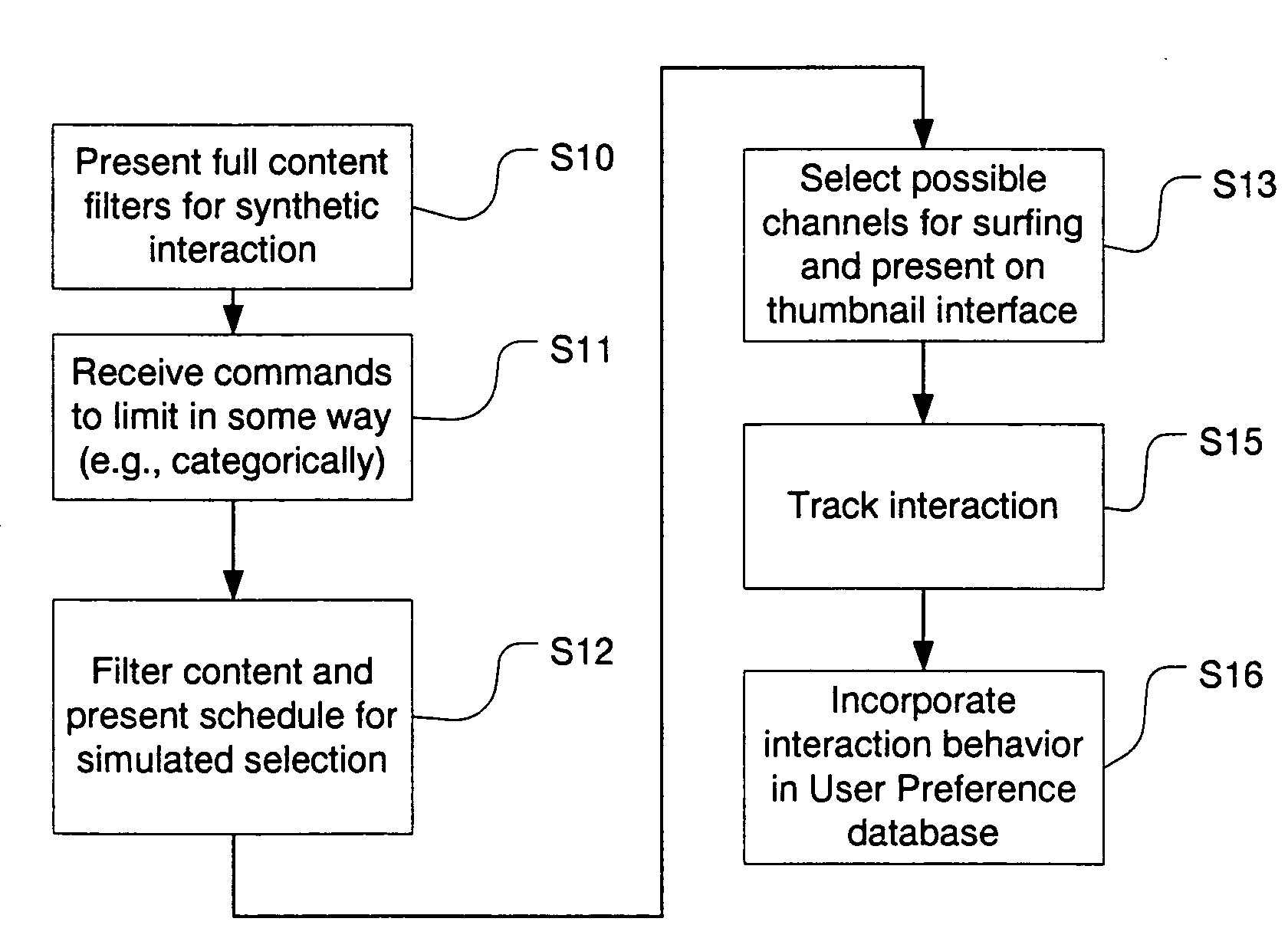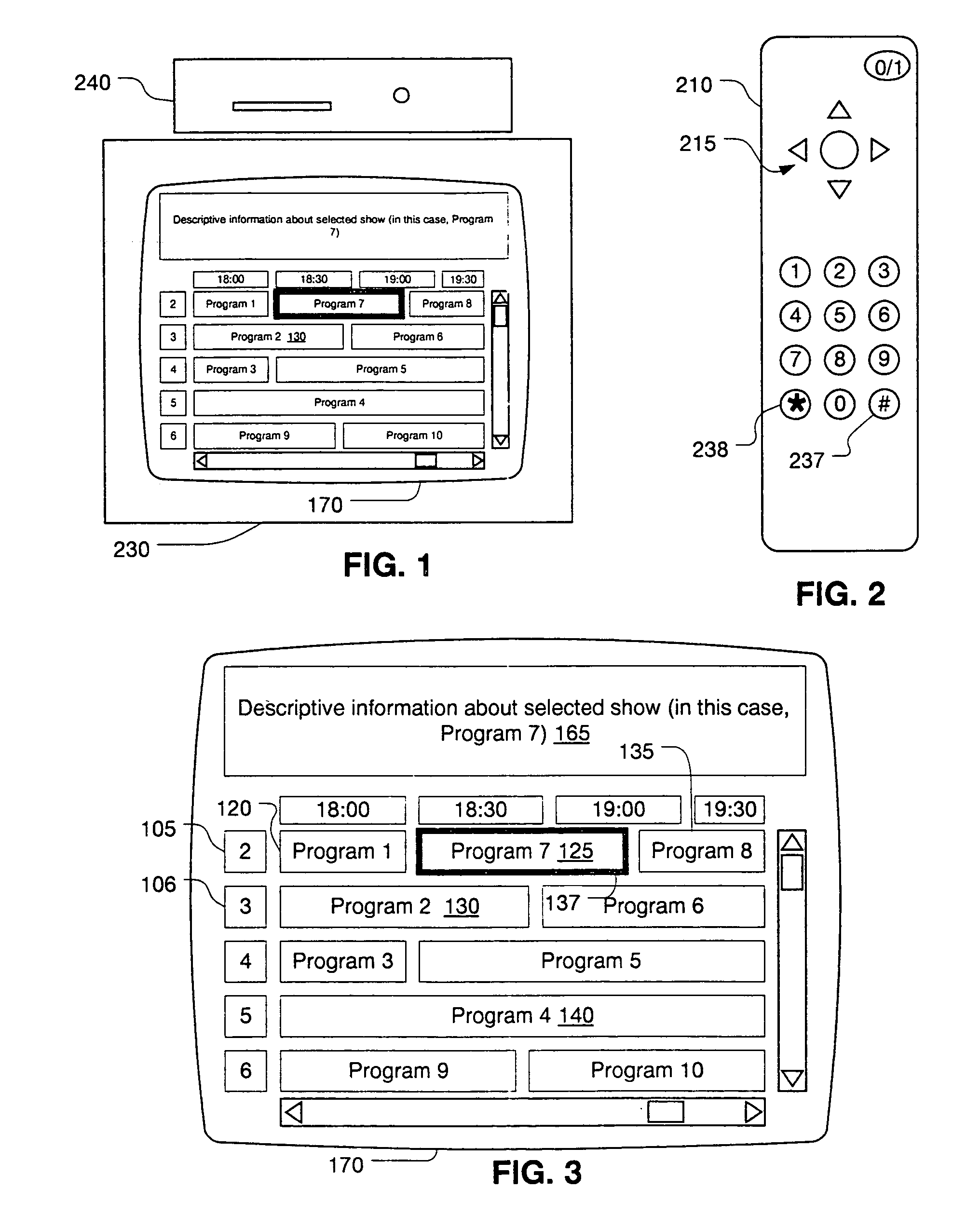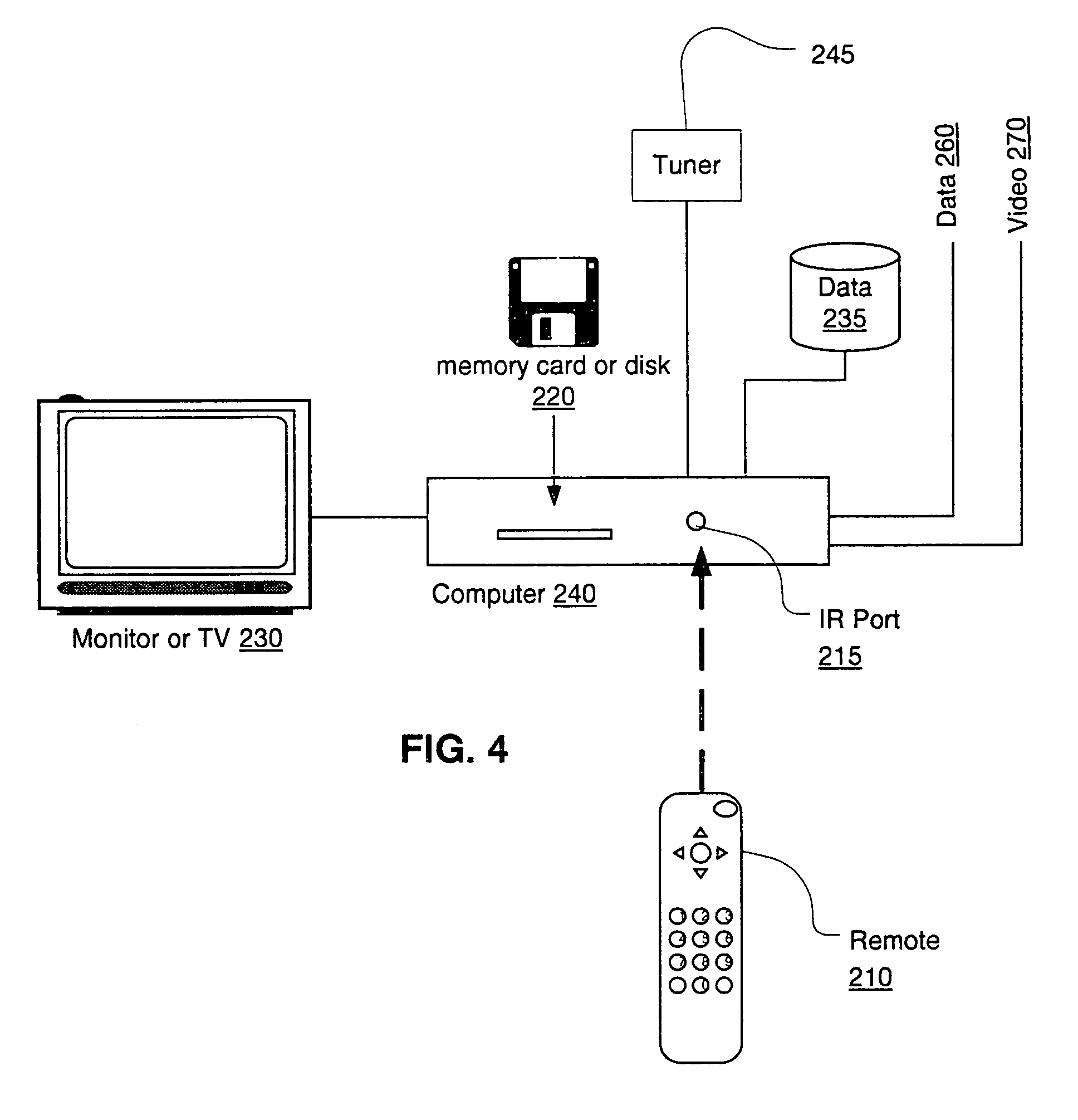Electronic program guide viewing history generator method and system
a technology of viewing history and generator method, which is applied in the field of electronic program guide viewing history generator method and system, can solve the problems of difficult task for common people to answer questions, take a very long time before the first type of system can begin to perform effectively, etc., and achieve the effect of quickly building the interaction history
- Summary
- Abstract
- Description
- Claims
- Application Information
AI Technical Summary
Benefits of technology
Problems solved by technology
Method used
Image
Examples
Embodiment Construction
[0055]Referring to FIGS. 1–4 the invention relates to the environment of electronic program guides (EPGs). In the context of televisions, EPG is applied loosely to various features that can be delivered using a database of program information. The program information may include titles and various descriptive information such as a narrative summary, various keywords categorizing the content, etc. In an embodiment, a computer sends program information to a television 230. Referring now also to FIGS. 2 and 3, the program information can be shown to the user in the form of a time-grid display 170 similar to the format commonly used for existing cable television channel guides. In the time-grid display 170, various programs are shown such as indicated by bars at 120, 125, 130, 135, and 140. The length of each bar (120–140) indicates a respective program's duration and the start and end points of each bar indicate the start and end times, respectively, of each respective program. A descr...
PUM
 Login to View More
Login to View More Abstract
Description
Claims
Application Information
 Login to View More
Login to View More - R&D
- Intellectual Property
- Life Sciences
- Materials
- Tech Scout
- Unparalleled Data Quality
- Higher Quality Content
- 60% Fewer Hallucinations
Browse by: Latest US Patents, China's latest patents, Technical Efficacy Thesaurus, Application Domain, Technology Topic, Popular Technical Reports.
© 2025 PatSnap. All rights reserved.Legal|Privacy policy|Modern Slavery Act Transparency Statement|Sitemap|About US| Contact US: help@patsnap.com



